A recent flurry of energy leasing in and around critical big game habitats may limit options for conserving the West’s iconic big game populations
Fall is in the air, sportsmen and women clad in camouflage and blaze orange are hitting their favorite haunts, and animals are on the move! Soon, winter will be upon us, and for that reason, mule deer, pronghorn and elk are scarfing up every bit of energy-rich forage they can find. These animals must build fat reserves to survive the colder months ahead, and, for many Western big game herds, this means long journeys to access the very best-available food.
As we all know, our public lands are managed for multiple uses – grazing, recreation, wildlife habitat, and energy development, to name a few. While these different uses can, generally speaking, be compatible with one another, striking that critical balance requires that land managers give careful consideration to avoiding potential conflicts, particularly if one use may cause irreparably harm to another resource. And this is just the case when it comes to managing for the conservation of migratory big game animals.
Unfortunately, recent policy directives issued by the Department of Interior on energy dominance and big game habitat conservation may be developing into just such a scenario. Here’s why, and how it can be avoided:
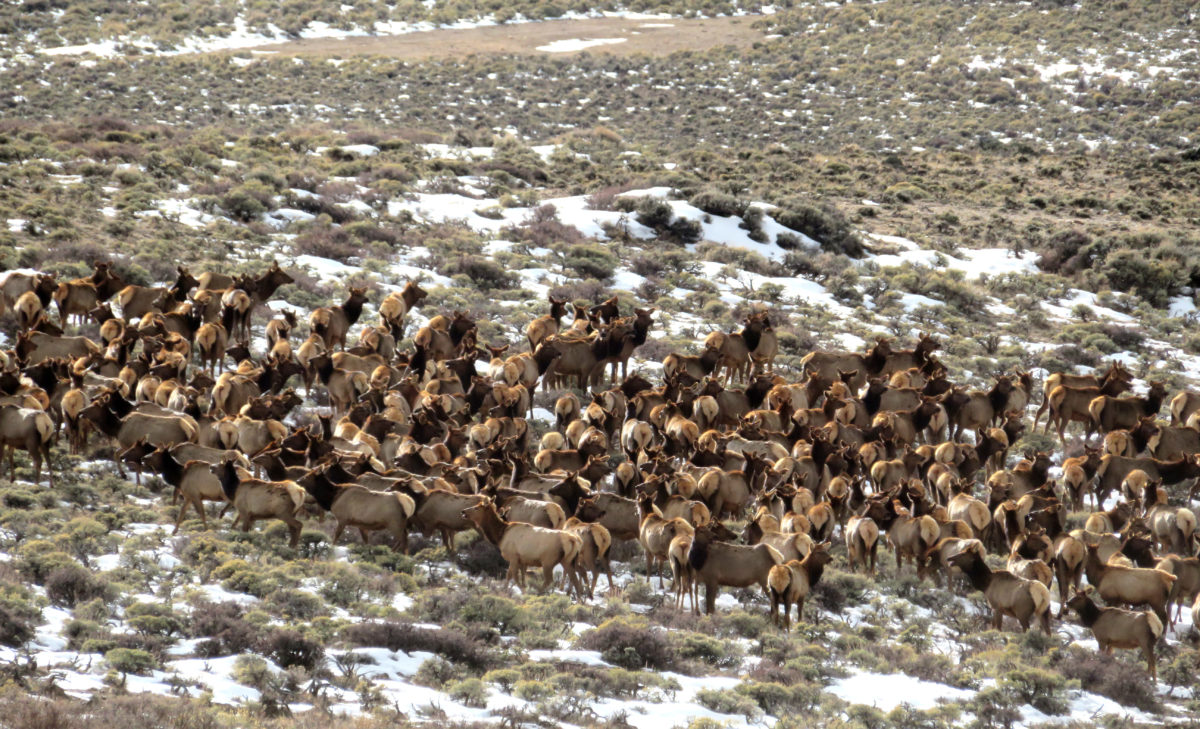
On the Move – But Not Too Fast
Big game animals can live in remote and harsh areas in the West, but only if they can move freely across the landscape at key times of the year to access nutritious food. Emerging science and new technologies have pinpointed actual, well-defined corridors traveled by animals during these migrations and measured how much time they spend in certain places along the way. We now know that, like migrating waterfowl and songbirds, big game animals utilize what are called stopover habitats, where animals spend more time – sometimes several days or even weeks – during their spring and fall movements. These vital areas offer food as well as security both from the elements and from predators, of the two- and four- legged varieties alike.
Recent studies also tell us that human development in the wrong places can disrupt the normal day-to-day patterns of migrating ungulates. In Wyoming, migrating mule deer move faster through developed areas, reduce time spent in stopovers, and avoid traditional stopovers altogether where development is most intensive. Researchers in Wyoming also recently discovered that mule deer continue to avoid areas within a half-mile of well pads used in oil and natural gas drilling for more than 15 years after the development of these sites, meaning that herds don’t habituate to these disturbances. And, contrary to what some may think, big game animals don’t simply find somewhere else to go. They exhibit strong fidelity to their traditional routes, meaning they aren’t likely to abandon their known paths and preferred habitats even when they become unusable.
These behavioral changes could mean that a migrating animal eats less food and burns more energy negotiating human structures like oil pads and roads. Furthermore, researchers in Wyoming recently found that on mule deer winter ranges every 1 percent of available forage directly lost from the physical footprint of infrastructure also resulted in an additional 4.6 percent loss of forage from herd’s avoidance of well pads. Such a situation can translate into poorer animal condition, higher winter mortality, lower reproduction, and overall fewer deer for hunters to pursue. In fact, studies in Wyoming demonstrate that one particular mule deer herd declined by 36 percent during a period of development in its habitat.
The effects of development on migrating animals do vary by location. Researchers studying deer in north-west Colorado found that steep and varied topography and pinyon-juniper forest vegetation can lessen the impacts on mule deer compared to the open sagebrush ranges in Wyoming. But there is, of course, a tipping point for development in any habitat, and keeping corridors and critical winter range mostly free of infrastructure and human activity would be prudent across the West.
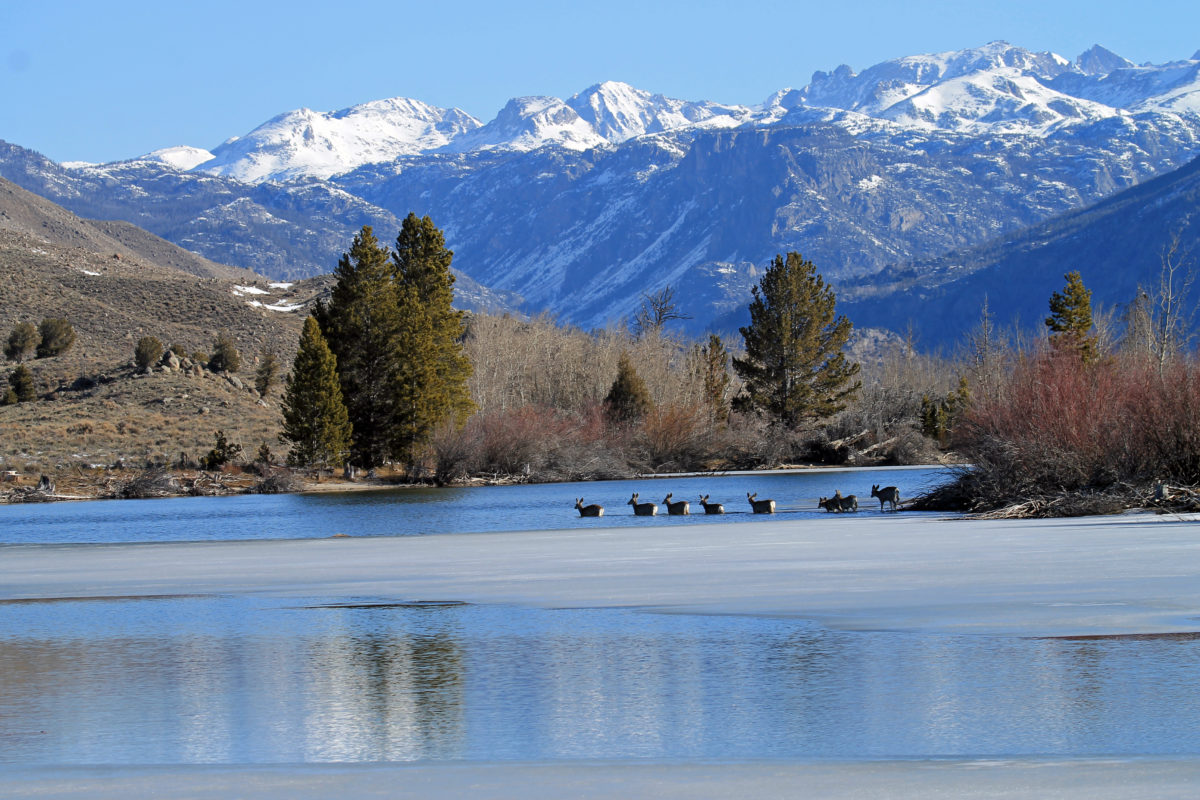
Competing Policies?
Although biologists have known for decades that big game animals need to migrate, what has been missing is the policy and specific guidance to land management agencies regarding the conservation of these habitats. Fortunately, Secretary of the Interior Ryan Zinke signed an order last February, S.O. 3362, directing agencies to better conserve critical big game habitats like migration corridors and winter range.
Sportsmen and women lauded this policy as an encouraging first step. The order directs Interior agencies, particularly the Bureau of Land Management (BLM), to assess migration corridors early in the land-use planning process and to develop site-specific management plans to conserve and restore these habitats. State wildlife agencies have submitted their top winter range and migration corridor priorities to DOI and are currently working with BLM to develop those conservation plans for each of these priorities across the West.
At the same time, DOI is also subject to Executive Order 13783, aimed at promoting the administration’s goals of energy independence and economic growth, and has ordered its agencies to advance energy development on public lands. At the end of 2017, the BLM estimated that about 26 million acres were under lease to oil and gas developers, of which about 12.8 million acres were currently producing in viable quantities. In 2018 alone, millions more acres across the western U.S. have already been offered up for leasing, many of which overlap existing migration corridors and winter range – among them some top priorities identified by state wildlife agencies, like the Red Desert-to-Hoback corridor in Wyoming.
While energy development at lower levels (generally less than 1.5 well pads per 640-acre section) may be compatible with big game use of habitats, this recent acceleration of leasing and development has created a potential impediment to successful conservation efforts. Leasing and actual development, however, aren’t the same thing, so understanding the current predicament requires a bit of knowledge about the process of leasing and development on federal lands.
In 2018 alone, millions more acres across the western U.S. have already been offered up for leasing, many of which overlap existing migration corridors and winter range…
Leasing vs. Development, and Why It Matters for Conservation
To be frank, this is a complex subject with numerous relevant statutory laws and administrative rules, as well as considerable volume of case law. But there are some basic processes and issues surrounding development that you should know.
Virtually all federal acres – unless specially designated, for example, as a wilderness area or national park – are open to exploration and nomination for leasing of minerals resources under the Mineral Leasing Act of 1920. By law, the BLM must offer quarterly lease sales by competitive bid wherever it has jurisdiction over federal mineral rights. Prior to any lease sale, however, the agency is legally required to allow the public the chance to file an administrative protest. In addition, the BLM can publish a list of lands under consideration for leasing and accept public comments, often giving state wildlife agencies additional opportunities for input given their special expertise.
Before sale, these agencies have several ways to see that conservation priorities, including those pertaining to S.O. 3362, are not negatively affected. They can ask for outright deferral of lease parcels that overlap migration corridors, effectively setting these parcels aside for some period of time and perhaps to be permanently withdrawn at a later date. They can also request that certain leases include protective stipulations required by the local Resource Management Plan (RMP), an underlying management framework for each of the BLM’s local administrative units, or request that the BLM add new stipulations that are more protective, such as limits to the amount of land that can be disturbed at any given time or restrictions on when particular areas of the lease can be occupied.
State agencies may also ask that the BLM add Conditions of Approval to be included in any permits to drill issued under the lease. These are mandatory requirements that can prescribe times of use for the lease, roads, or other associated facilities. Lastly, wildlife agencies can request “special lease notices” that require the purchaser of certain lease parcels to meet with the agency to discuss preferred development approaches that would minimize impacts on wildlife, such as the timing of construction or road blading.
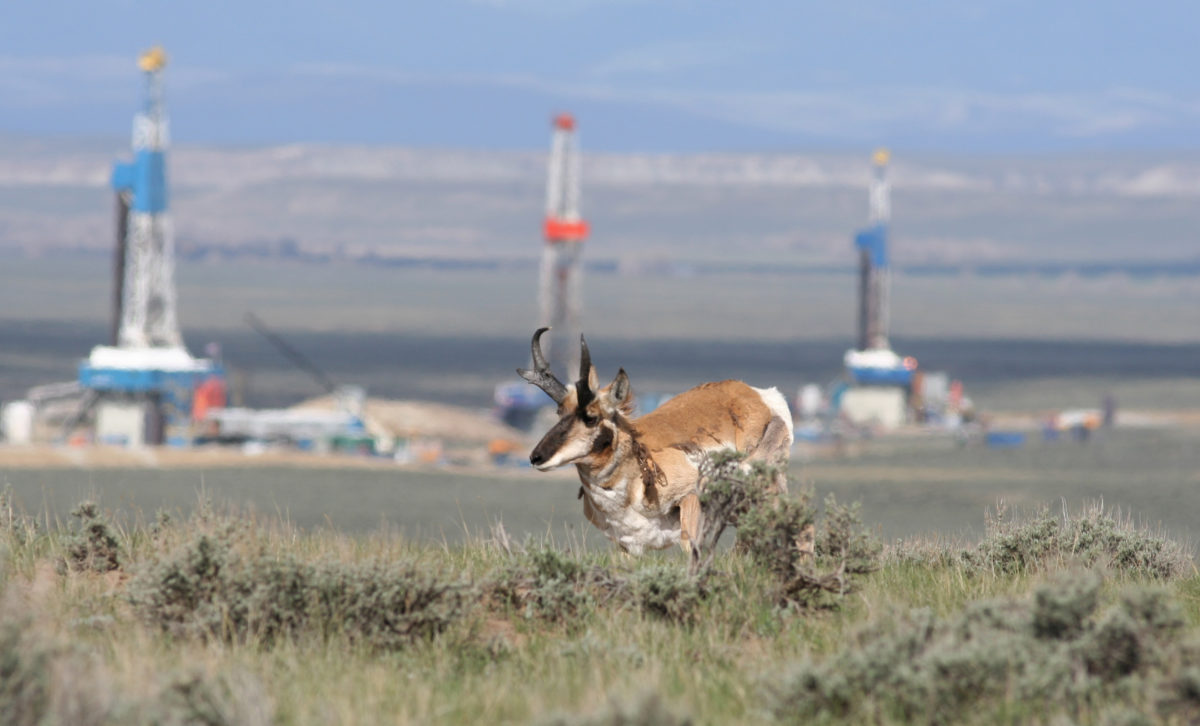
Unlike protective stipulations, which would make the necessary conservation measures legally binding prior to the sale of a nominated lease parcel, special lease notices do not require the leaseholder to follow the state agency’s recommendations. While most operators are likely to do so, wildlife remain at considerable risk should a less-conscientious developer purchase the lease. Once the lease is sold, the purchaser has a valid and existing right to develop those minerals. If the BLM is only relying on a lease notice, the agency is left to negotiate with the operator to see that conservation priorities are safeguarded.
Even after the sale, as noted before, the purchaser and/or developer must still submit an Application for Permit to Drill (APD) before actually developing the resource. At this stage, the BLM imposes Conditions of Approval as part of the final permitting process, and a state wildlife agency can weigh in here as well. While these conditions are often specified at the time of lease issuance, opportunities to comment and propose further measures can arise at the time of permitting. Given that the leaseholder already possesses development rights, however, those Conditions of Approval cannot unreasonably impede the ability of the operator to fully develop the mineral resource – which could limit options for conservation.
Our Current Predicament
In short, once leases have been sold, the implementation of new conservation measures is dependent on the developer and the many factors that affect how mineral resources can and will be extracted.
Concurrently – yet independently – the BLM is actively leasing numerous parcels of land that overlap state priority big game winter range and migration corridors. This was true with the recent third quarter 2018 Wyoming BLM oil and gas lease sales, which saw the sale of parcels for leasing that overlap the Red Desert-to-Hoback migration corridor, a top conservation priority for state wildlife officials. An upcoming fourth quarter sale will include more parcels that overlap the same and another priority migration corridor. The same scenario is sure to unfold elsewhere in the very near future.
In short, once leases have been sold, the implementation of new conservation measures is dependent who the developer is and the many factors that affect how mineral resources can and will be extracted.
While all Western states have identified priority areas for DOI, the relevant state and federal agencies have yet to determine specific actions needed to ensure the long-term conservation and enhancement of these vital habitats. By committing to land-management decisions under the direction of aging RMPs that do not acknowledge or consider big game migration corridors, the BLM is limiting its own options and creating unnecessary conflict between energy and big game habitat directives. What’s more, this also puts the onus on state wildlife agencies, leaving them in the difficult position of requesting deferrals and other measures to conserve winter range and corridors after leasing decisions have already been made.
So, what should be done to get migration corridor conservation back on track?
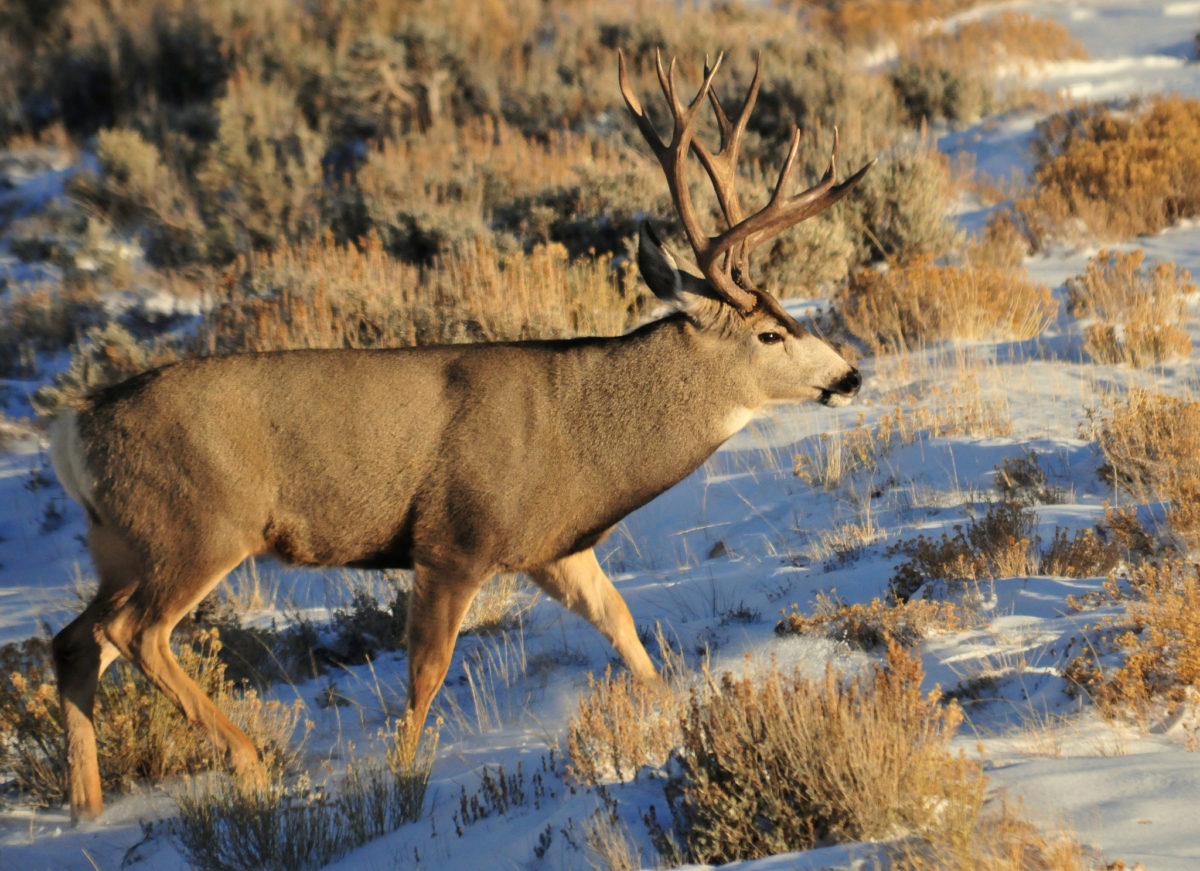
Hitting the “Pause” Button and Finding Balance
Ultimately, the success of S.O. 3362 hinges on striking that critical balance between energy development and conserving big game habitats. Leasing in migration corridors and winter range, especially those identified by the states as top priorities, poses serious risk unless management plans and science-based guidance are already in place. We need to move away from reactive decision-making to more proactive approaches and better upfront planning.
It’s time to hit the “pause” button and take a step back. Sportsmen and women are not asking BLM to withdraw all areas in migration corridors permanently. Rather, we are simply asking that they defer leasing all portions of nominated parcels that overlap migration corridors and critical winter range until adequate management plans for those habitats can be developed. The BLM should continue working with state wildlife agencies to finalize action plans for the conservation and enhancement of individual migration corridors, and integrate those conservation objectives into appropriate BLM RMPs.
Consultation with governors and wildlife agencies in each Western state will be key to ensuring balance among competing land uses. Recently, DOI and the state of Wyoming agreed to defer about 5,000 acres of lease parcels that encompassed the Red Desert-to-Hoback corridor – a move applauded by the sporting and conservation communities. However, there are still several thousand acres that remain on the lease sale block with only special lease notices attached.
Such a situation calls into question whether migration corridors and winter range indeed will be balanced with energy development and whether these habitats will remain functional for the long-term survival and health of our Western big game herds. All could be well and good for big game in most or all of these leased acres, but once the leases are sold that all depends on the developer and their willingness to cooperate while also exercising their mineral rights.
Mr. Zinke’s initiative on big game migration corridors and seasonal habitat could clearly be a model for federal policy being shaped by the best-available science. We see this as a critical issue for the future of wildlife and hunting, and we applaud the leadership on this issue demonstrated by S.O. 3362. To see it through, however, we need to keep all options open for striking the balance needed to maintain the biological integrity and functionality of the Wests’ great wildlife migrations.
Top photo courtesy: BLM Wyoming


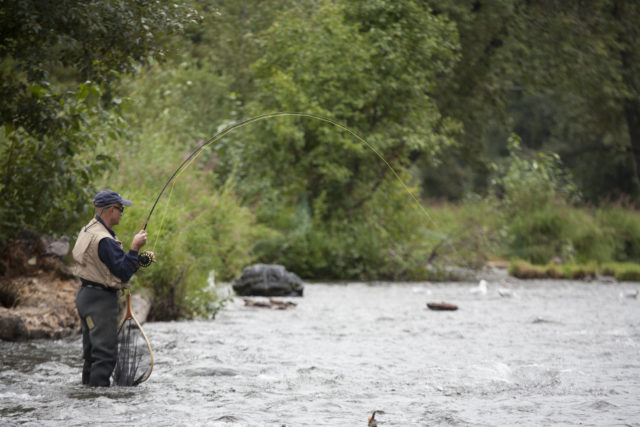




Can these leases be sublet? If so, groups like RMEF, SCI, MDF, and the Nature Conservancy could then purchase the leases, then sub-lease them to the oil & gas and minerals companies, but with conditions that the BLM doesn’t stipulate. The protection of the migration corridors, winter habitat, and stopover habitat must be protected at those vital times when they are being utilized by wildlife.
Please check into this option. If leases can be sublet, its time to contact the big money conservation groups and buy said leases, put in wildlife friendly conditions, then lease them to industry. Hope that helps.
What’s to stop the ogm companies from purchasing the leases directly from the government? Today’s political climate favors the companies.
Money seems to always win out over wildlife. It is time people stop breeding, stop thinking we are entitled to anything and everything, and put the survival of other species first. This means the ability to migrate, safe passage over busy highways, and places where they are not pressured, so they can calve undisturbed by people, dogs, and especially bicycles!
Nature conservation groups should work together to purchase leases that are in critical wildlife habitat and keep them undeveloped. I do not think there is a time limit on when the leased property must be developed.